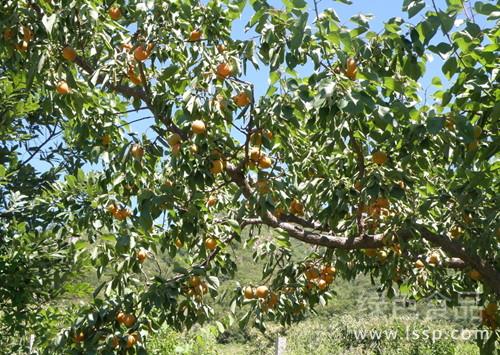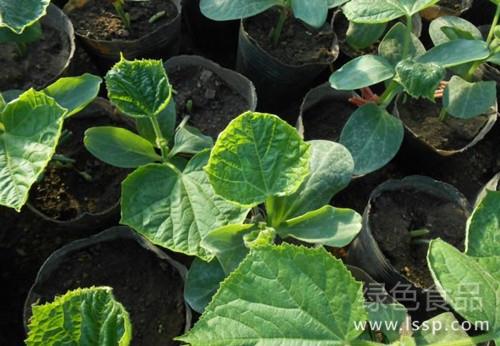Deep ploughing can improve the method of deep ploughing and ripening of aerated and permeable apricot trees.

Apricot tree
1. Soil management: good soil management can make apricot orchard soil loose, aerated well, active microorganisms in soil, and ensure apricot root development in suitable environment, while strong root system is the basis and guarantee for apricot tree to absorb water and fertilizer. Only when the root system is strong and the absorption root system is developed, can the growth and development of the aboveground have a nutritional basis. Therefore, improving the level of soil management in apricot orchard is the premise of high yield and high yield.
Second, deep ripening: the main method of soil improvement is deep ripening. Apricot orchard deep ripening, combined with the application of organic fertilizer, deepen the living soil layer, improve soil fertility, improve soil physical and chemical properties, promote nutrient transformation, enhance microbial activities, accelerate soil ripening and eliminate soil unfavorable factors. Deep ploughing can improve soil porosity, enhance soil water and fertilizer conservation capacity, and improve ventilation and permeability. Deep ploughing combined with the application of organic fertilizer can increase the number of microorganisms in the soil and enhance their activity, so as to accelerate the decay and decomposition of organic matter and improve soil fertility. Deep turning can also deepen the root distribution layer and increase the number of roots. Especially for the barren mountainous area or sandy land and clayey land where the soil layer is insufficient for 50cm, the effect of ripening and improvement is more obvious.
Third, timely deep ploughing: apricot orchard deep ploughing can be carried out after thawing in early spring and before the rainy season in early summer, but it is most suitable for fruit harvesting and simultaneous application of base fertilizer and water storage irrigation in autumn. At this time, the root wound is easy to heal, and it is easy to send new roots, which is beneficial to the growth and development of apricot trees in the following year. At the same time, the long winter after deep turning is beneficial to soil weathering and water storage.
Fourth, ploughing depth: the soil texture is good, the root system is developed, the growth is deeper, and the ploughing should be deep; on the contrary, it should be shallow. The clayey soil should be deep, the sandy soil should be shallow, the groundwater level should be low and deep, and the high groundwater level should be shallow.
Fifth, the method of deep turning:
① goes deep into the whole garden. Turn the soil outside the planting hole once and for all. It is suitable for plains, beaches and slopes with small slopes. This method requires more labor at one time, but it is easy to level the land after turning, which is beneficial to orchard farming.
② expands the acupoint and turns over deeply. During the period of the young tree, according to the extension of the root system, the hole was expanded and turned deeply from the fixed planting hole year by year, and the deep turning of the hole should be connected with the last deep turning trench, and there was no partition wall in the middle, until it was turned all over between the rows.
③ turns deep across lines. When carried out between rows and plants, the root system of apricot trees is close to covering the whole garden, turning every other row and turning every year, so that only one side of the root system is damaged each time, which has little effect on the growth and fruit of apricot trees. However, there is a deep turn between lines, and the two sides of the trench are at least 1 meter away from the trunk.
Matters needing attention:
1, careful root protection: when artificial deep turning, the topsoil and heart soil are stacked separately, and the roots are as few as possible, especially the lateral roots above 1cm, which can not be broken, otherwise it will cause apricot trees to grow slowly or stop temporarily; but the fine roots below 1cm are easy to heal and send out a large amount of new roots. The roots dug out should be protected, not dry, exposed to the sun or frozen, and the injured surface of the big roots should be repaired in time.
2. Combined fertilization: when filling the soil, first fill the topsoil and the ground mature soil around the ditch, and at the same time apply a large amount of organic manure, such as manure, compost, green manure, grass, straw and so on. Generally, for every cubic meter of soil turned, 20-40 kg of organic soil fertilizer should be applied, in addition, phosphate fertilizer should be mixed. Organic fertilizer should be evenly mixed with soil, and non-perishable branches should be placed at the bottom of the ditch.
3. Fill and water, the core soil does not return to fill the ditch, when the ditch is almost full, the heart soil will be flat on the ground in order to mature. After the filling is flattened, strive for water penetration, so that the apricot root system is closely connected with the soil and the growth can be restored quickly.
Related
- Fuxing push coffee new agricultural production and marketing class: lack of small-scale processing plants
- Jujube rice field leisure farm deep ploughing Yilan for five years to create a space for organic food and play
- Nongyu Farm-A trial of organic papaya for brave women with advanced technology
- Four points for attention in the prevention and control of diseases and insect pests of edible fungi
- How to add nutrient solution to Edible Fungi
- Is there any good way to control edible fungus mites?
- Open Inoculation Technology of Edible Fungi
- Is there any clever way to use fertilizer for edible fungus in winter?
- What agents are used to kill the pathogens of edible fungi in the mushroom shed?
- Rapid drying of Edible Fungi



